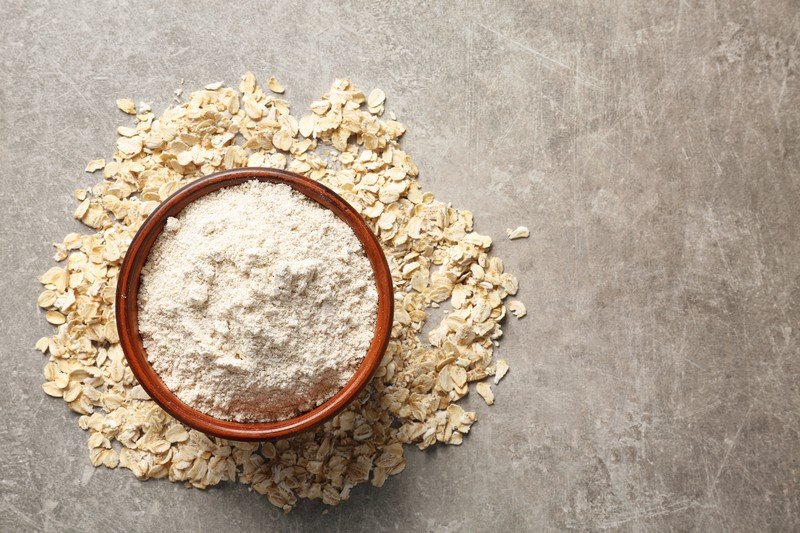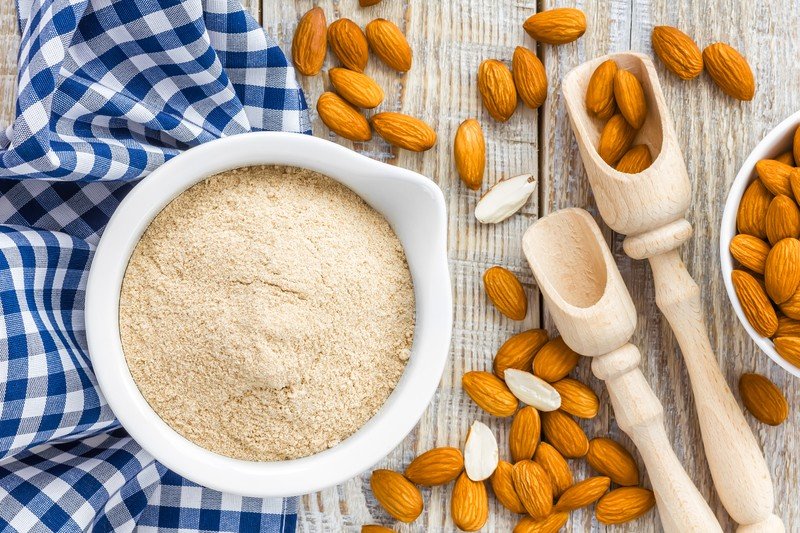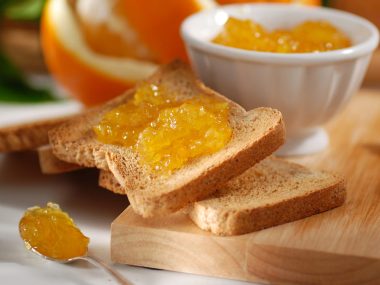Chickpea is basically known as a healthy vegan and vegetarian dish that can actually replace meats in most dishes. One of its famous dishes is hummus and falafel. Vegans and vegetarians alike attest to its amazing health benefits as well as its taste and use in the kitchen.
Chickpea flour has gained popularity around the world, however, it can be absent in some areas.
But, don’t worry because you can substitute Chickpea Flour with quinoa flour, millet flour, cassava flour, wheat flour, oat flour, seitan flour, almond flour, buckwheat flour, amaranth flour, and spelt flour.
Substitutes For Chickpea Flour
Here are some ways on how to use these 10 substitutes in your dishes.
1. Quinoa Flour
Other than substituting rice and other carb sources, quinoa does far more than that. I recently discovered that I can make a burger patty out of quinoa or quinoa flour. I simply mix it with other ingredients and use it as a binder. It’s perfect to use for vegan or other vegetarian dishes.
For all the falafel fans, try substituting it with quinoa flour and just copy the rest of the recipe. Other recipes you can try are quinoa nuggets, quinoa balls, quinoa hotdogs and so much more.
2. Millet Flour
Millet is one of the famous crops in Asia and Africa, making it a staple food source. The good thing about this type of flour is its similarities to wheat flour without having gluten. Healthier and packed with protein, amino acids, and dietary fibers.
When using it with baked dishes, I highly recommend mixing it with other types of flour like wheat flour to bind it properly. It can have a tendency to fall apart when added with too much or not enough water.
3. Cassava Flour
Cassava flour is extracted from its original ground cassava root. It quite resembles potatoes which you can cook and eat as it is. Also a very good source of protein, filling and healthy. If you’re looking into making gluten-free baked dishes, this can also be a good substitute for chickpea flour.
You can use this substitute for most baked dishes but I highly advise to mix it with other types of flour when making bread. Cassava doesn’t have the capability to rise and will make a denser bread if not mixed with other flours.
4. Wheat Flour
For all the bread fanatics, you can use wheat flour instead which is the safest choice you can have. It works like magic when making an equally fluffy and slightly dense bread. Just take note that it contains gluten, and might not be the best choice for those who are sensitive to it.
But if gluten is not an issue, wheat flour is a healthy substitute. You don’t have to worry about packing some carbs because it’s rich in fiber, vitamins, and minerals.
5. Oat Flour
Another gluten-free variant that you can substitute with chickpea flour is oat flour. Oat flour is readily available in most grocery markets and the good news is you can actually make one of your own.
Just get your regular oatmeal and grind it in a food processor until it becomes powdery in texture. Use it not only for baked dishes but also as a binder for healthy vegan dishes.
6. Seitan Flour
Seitan is actually the main protein component of wheat. You can say that they are quite the same however, seitan is more concentrated than wheat flour. It’s also quite stickier when added with water which is perfect for making stretchy baked dishes.
You can also mix seitan flour with other flours like oat or wheat to make it less sticky for other dishes. Especially when making bread, its sticky characteristic might eliminate the air to stay inside which makes the bread dense and heavy.
7. Almond Flour
Almond flour is what I sometimes use when I’m out of chickpea flour. Almonds are very rich in protein, so other than using it as a dessert, I also like making vegan meatballs or burger patties with it. It’s easy to season and bind, plus it offers that nutty aroma that brings so much difference to the food.
You can try making almond flour at home with the use of a food processor as well. It’s simple, just grind it until it reaches its powdery form. Just make sure that you peel the skin first so it won’t add its bitter taste into the flour. Store the fresh almond flour and have it ready for your next recipe.
8. Buckwheat Flour
When making pasta or noodles, the choice of flour is highly important. In Japan, they make their soba noodles by using buckwheat flour. That explains why the noodles are so tasty and al dente to taste. Chickpea might not be a good option for making pasta compared to buckwheat flour.
Create homemade healthy noodles and pasta at home by using buckwheat flour. It has lesser calories and more health benefits which will make you feel less guilty to consume it on a daily basis. Once you try making your fresh noodles, you’ll never go back to store-bought ones.
9. Amaranth Flour
Amaranth flour resembles buckwheat flour in so many ways. First, it’s also gluten-free and a super cereal. It has been long used as a food staple back in ancient times, making it 100% proven and tested in terms of health benefits and kitchen uses. Amaranth flour is perfect for making tortillas, flatbread, and other baked dishes.
You can also use some help from it by using a teaspoon of amaranth flour to thicken soups and stews. It adds that nutty flavor and fragrant aroma to the dish unlike using regular cornstarch.
10. Spelt Flour
Spelt flour made it into our list because of its very unique characteristics. It also has that nutty flavor and aromatic smell when added to dishes like baked goods. However, it’s not as flexible as other types of flour where you can use it with almost all baked dishes. Spelt has to be mixed with other flour to achieve consistency when baking desserts or bread.
Spelt flour is best used when making cookies, muffins, brownies, and granola bars. Especially if you’re trying to make a healthier dessert option for the family, this one’s the best choice. If you can’t find this in your nearby grocery store, feel free to check out possibilities online.
My Personal Pick
It’s good to know that we all have at least 10 choices to choose from when substituting chickpea flour. But to share some of my own full proof experience, this is what I have to say.
For savory dishes that call for chickpea flour, I’ll go with quinoa flour. It can be way more expensive but it does the job. It’s easy to season and mix with other ingredients which I mostly use when I’m out of chickpea. The health benefits that quinoa possesses is what sets it apart from the rest. Although it’s quite pricier on the side, I don’t mind since it’s worth the purchase.
For baking, I still like using oat flour. First of all, it’s free from gluten, high in nutritional value, and less in calories. This is my go-to choice whenever I’m baking cakes, pastries, bread, or even make tortillas. I like its consistency and how it tastes with the dish. It’s not too overpowering and easy to work within most dishes.
But, whatever your pick is, I’m pretty sure all of the 10 substitutes we’ve listed above will put you in the right spot. Just make sure to follow the recommendations on which flour substitute works well with baked dishes, savory recipes, and whatnot. If you have other chickpea flour substitutes you have tried before, feel free to share them in the comments down below.












1 comment
just wanted to know whether or not the substitutions listed have a 1:1 ratio…my son cannot have chickpeas or chickpea flour and so would like to sub Buckwheat flour in a dumpling wrapper recipe that calls for chickpea flour. thank you in advance